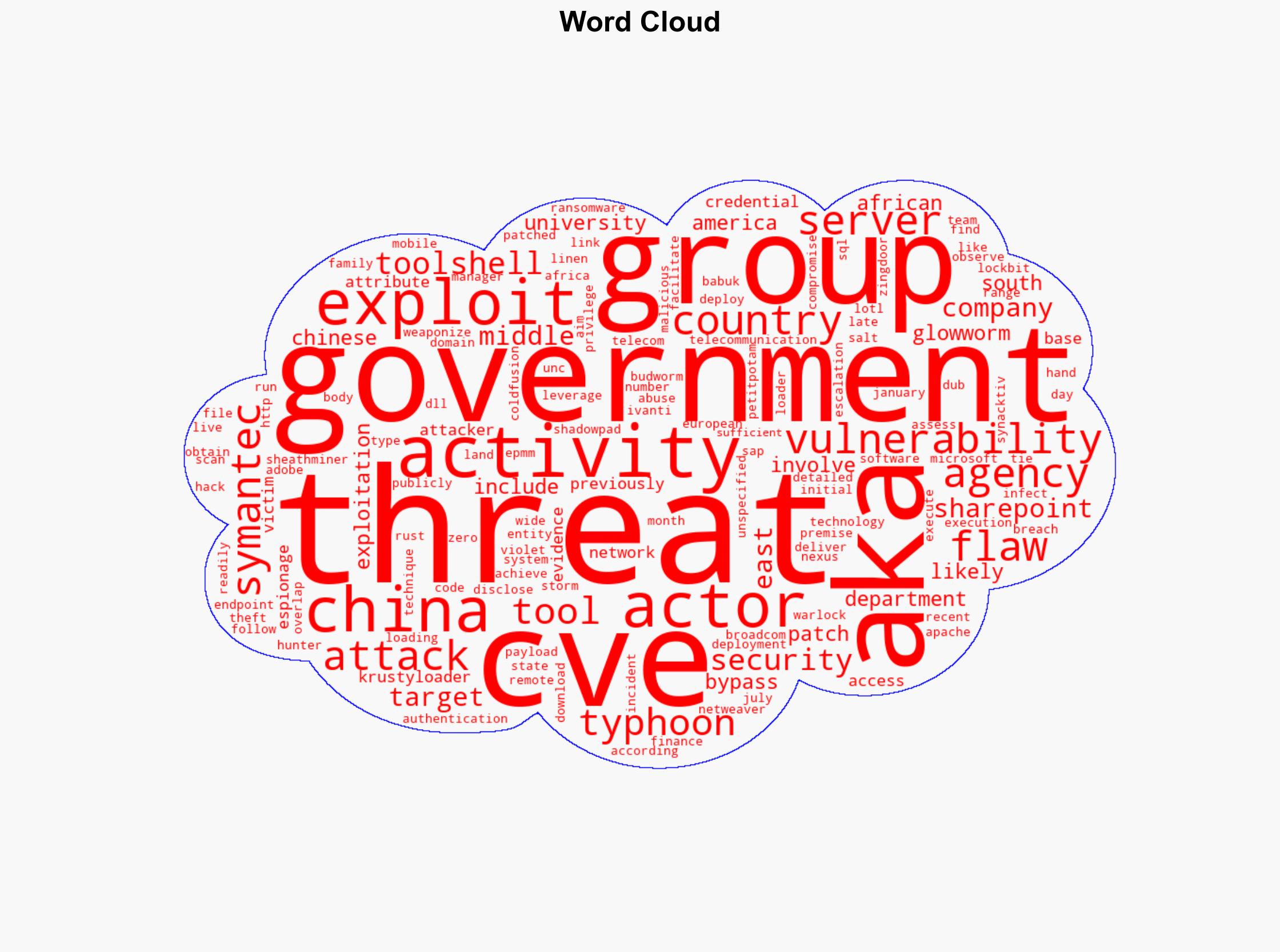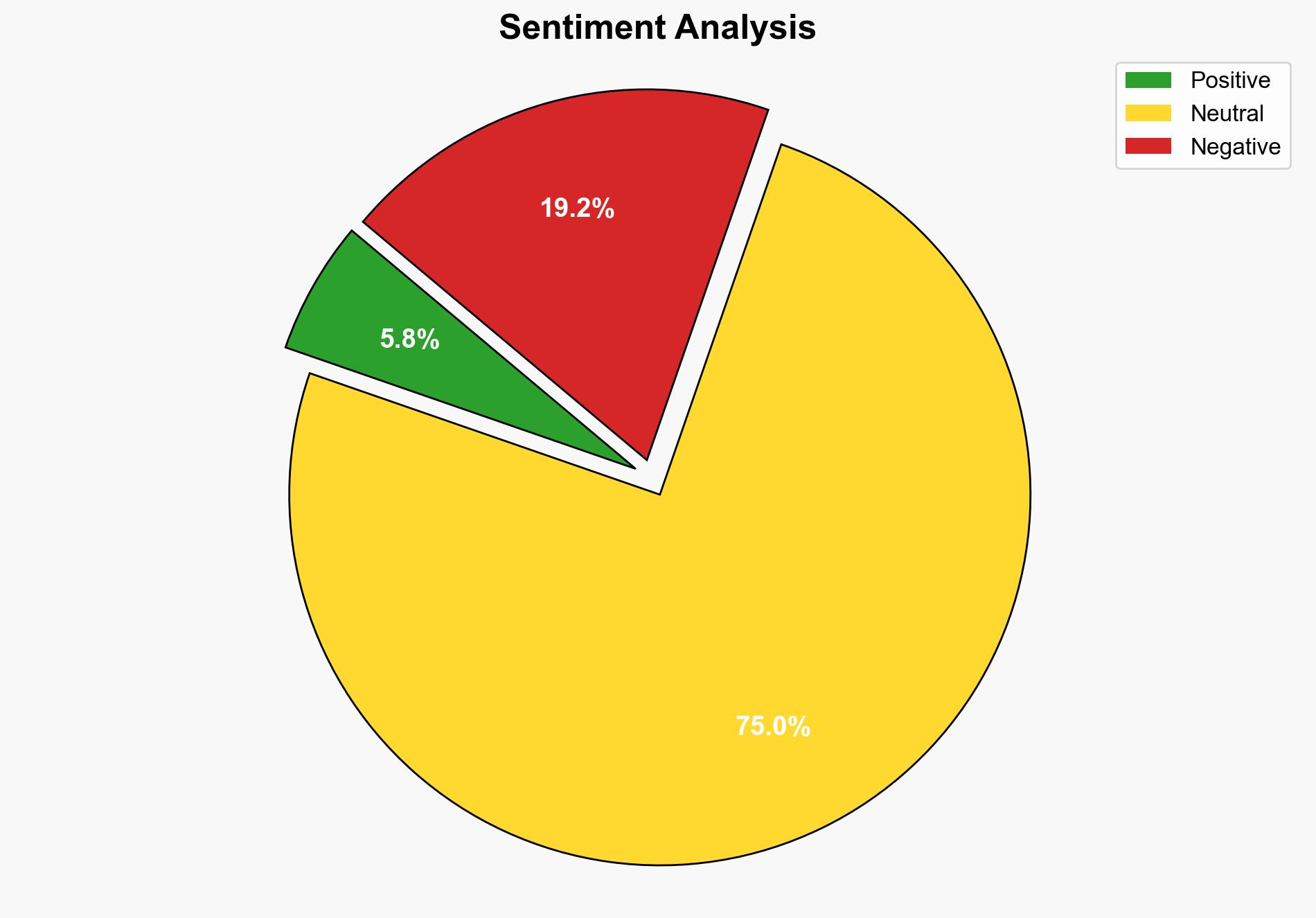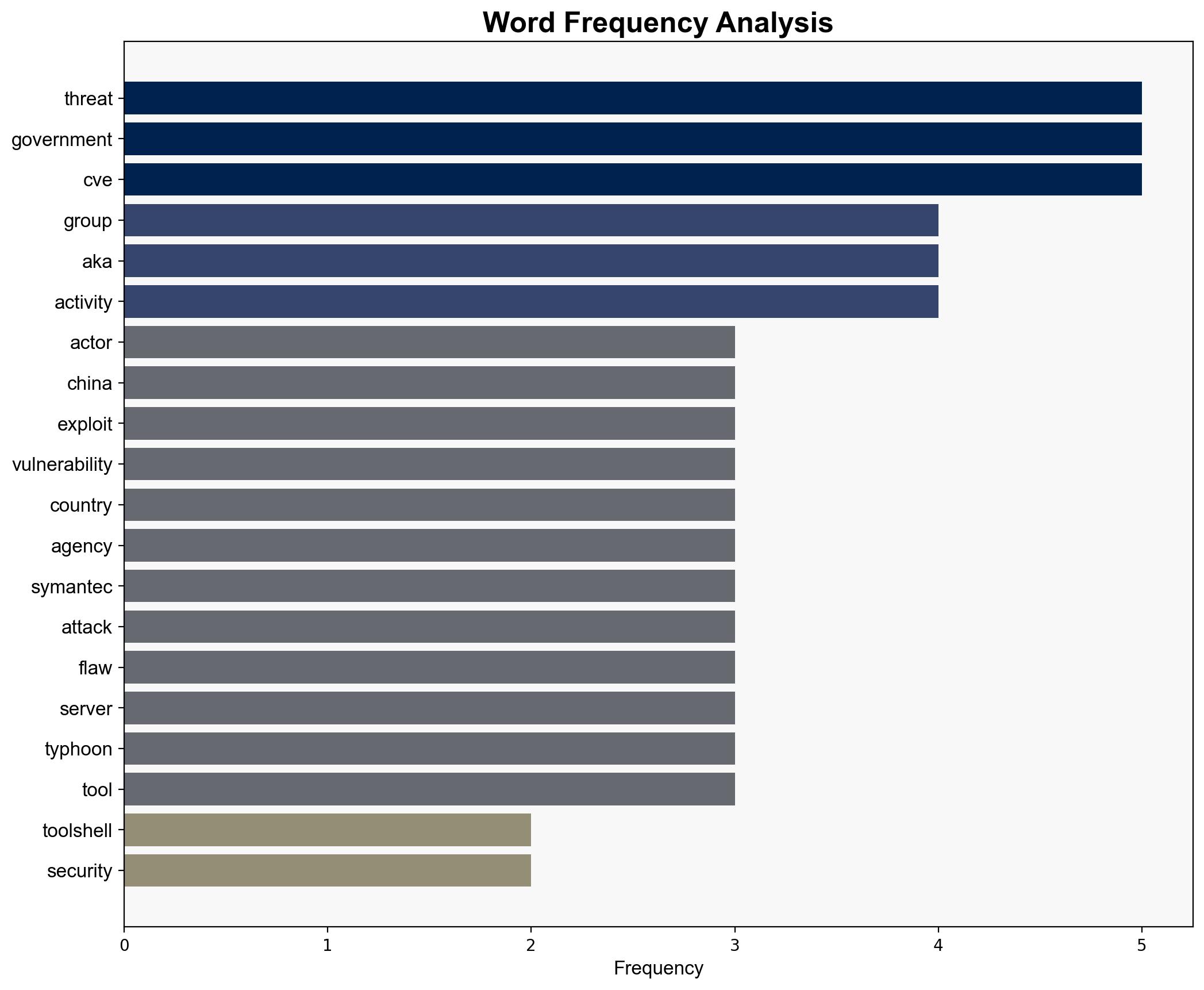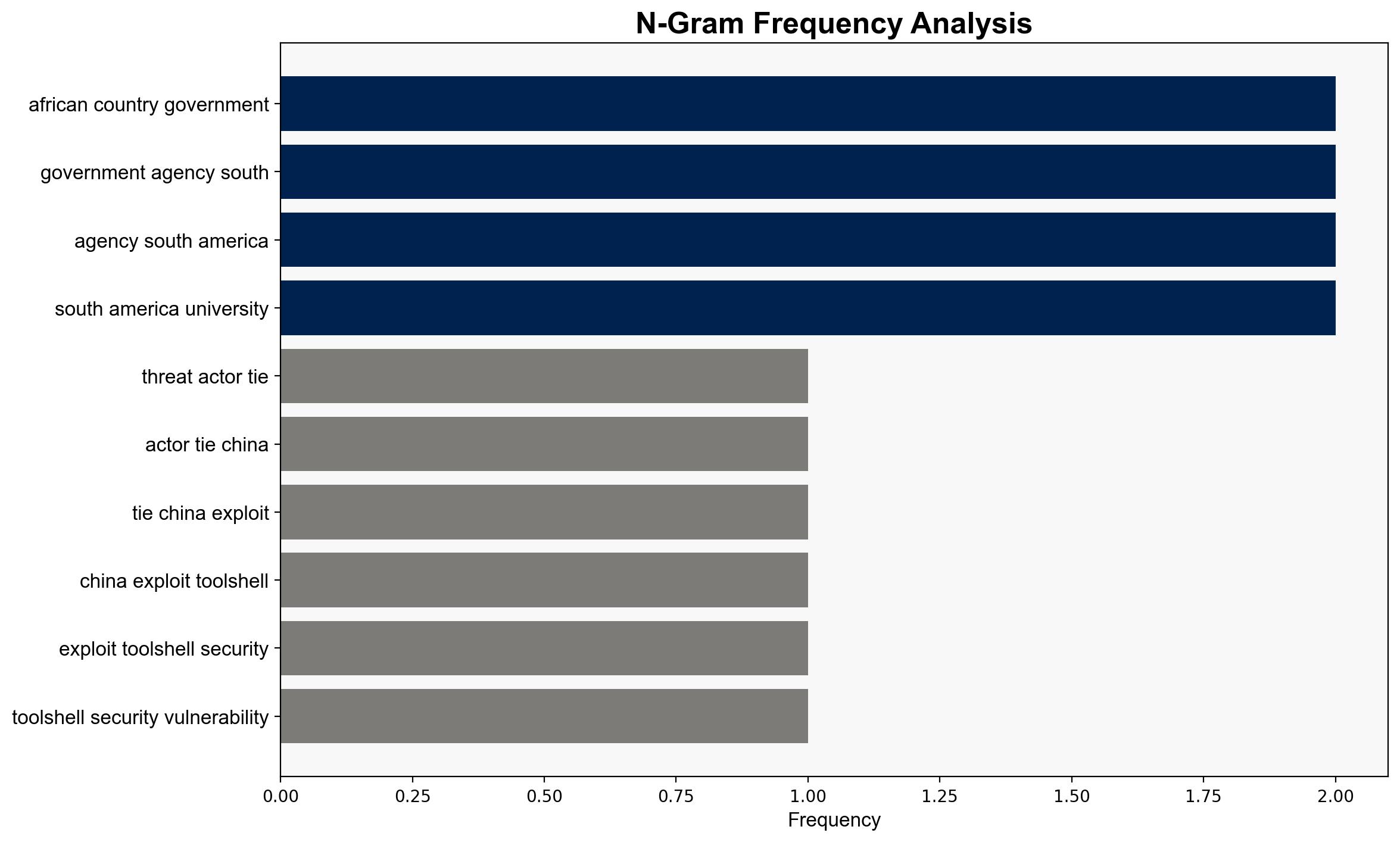Chinese Threat Actors Exploit ToolShell SharePoint Flaw Weeks After Microsoft’s July Patch – Internet
Published on: 2025-10-22
Intelligence Report: Chinese Threat Actors Exploit ToolShell SharePoint Flaw Weeks After Microsoft’s July Patch – Internet
1. BLUF (Bottom Line Up Front)
The exploitation of the ToolShell SharePoint flaw by Chinese threat actors, despite a recent patch, suggests a strategic focus on maintaining access to sensitive networks for espionage. The most supported hypothesis is that these activities are state-sponsored, aiming to gather intelligence from targeted sectors. Confidence level: High. Recommended action: Enhance monitoring of known vulnerabilities and improve patch management protocols to mitigate similar threats.
2. Competing Hypotheses
Hypothesis 1: The exploitation is primarily state-sponsored, with the objective of gathering intelligence from strategic sectors such as telecommunications, government, and finance, as evidenced by the targeted nature of the attacks and the involvement of known Chinese threat groups like Linen Typhoon and Salt Typhoon.
Hypothesis 2: The exploitation is driven by financially motivated cybercriminals using state-sponsored techniques and tools to gain unauthorized access for ransomware deployment, as indicated by the use of ransomware families like LockBit and Babuk.
Using ACH 2.0, Hypothesis 1 is better supported due to the specific targeting of government and educational institutions, which aligns more closely with espionage rather than financial gain.
3. Key Assumptions and Red Flags
– Assumption: The attribution to Chinese threat actors is accurate based on tool usage and target profiles.
– Red Flag: The possibility of false flag operations by non-Chinese actors using Chinese tools to mislead attribution.
– Blind Spot: Lack of detailed information on the specific vulnerabilities exploited in South America and the university attacks.
4. Implications and Strategic Risks
The exploitation of patched vulnerabilities highlights a persistent threat to global cybersecurity, with potential cascading effects on international relations and economic stability. Escalation could occur if retaliatory cyber actions are taken by affected nations, potentially leading to increased geopolitical tensions.
5. Recommendations and Outlook
- Enhance international collaboration on cybersecurity to improve threat intelligence sharing and response coordination.
- Implement robust patch management and vulnerability assessment programs to reduce exposure to known exploits.
- Scenario Projections:
- Best Case: Improved defenses lead to a significant reduction in successful cyber intrusions.
- Worst Case: Continued exploitation results in major data breaches and geopolitical conflicts.
- Most Likely: Ongoing cat-and-mouse dynamics between threat actors and defenders, with periodic successful intrusions.
6. Key Individuals and Entities
– Linen Typhoon (aka Budworm)
– Violet Typhoon (aka Sheathminer)
– Salt Typhoon (aka Glowworm)
– Warlock, LockBit, Babuk ransomware families
– Broadcom Symantec Threat Hunter Team
7. Thematic Tags
national security threats, cybersecurity, counter-terrorism, regional focus




